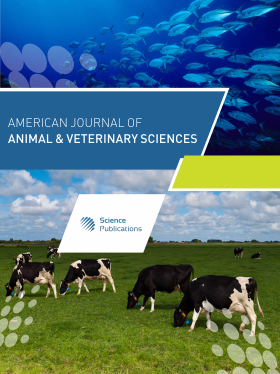Effectiveness of Disinfectants on Environmental Multidrug Resistance Contaminants Causing Skin Abscess in Farm Animals
- 1 Agriculture Research Center (ARC), Egypt
- 2 Equine Bacterial Diseases Unit Animal health research institute (AHRI), Egypt
Abstract
Resistance to antimicrobial agents is recognized as a growing problem for different farms and infection of farm animals with abscesses is detrimental to livestock due to the enormous economic losses. This study aimed to find out the bacterial infection of some cases in farm animals suffering from wounds and abscesses in Fayoum Governorate, Egypt and Related Antimicrobial Resistance (AMR) procedures and technical investigations focused on disinfectant effects or the effects of AMR on bacterial persistence. The samples were collected from 130 different animals (24 buffaloes, 6 cows, 35 sheep, 40 goats, 10 camels and 15 donkeys). By bacteriology examination, eight isolates (33.3%) of Corynebacterium pseudotuberculosis biovarequi (C. equi) was isolated only from buffalo with edematous skin lesions (OSD), while Corynebacterium pseudotuberculosis biovar ovis (C. ovis) were isolated from sheep and goats with caseous lymphadenitis lesions in a rate 28.6% and 27.5% respectively. On susceptibility test against antimicrobial agents. Pipracillin-tazablam was the best of choice for Pseudomonas aeruginosa and C. equi (20%).The result showed the bacterial growth at OD595 after treatment with Povidone-iodine (PI) 10% at different time intervals, where all types of isolates showed the lowest growth after 24 h, C. ovis showed the lowest bacterial growth, while the C. equi showed the lowest bacterial growth with H2O21%. Conclusion: Caseous lymphadenitis remains an important challenge for the sheep and goat industries. C. equi also plays a role in buffalo raring and caused edematous skin disease which affects milk and meat production. The high resistance of both C. ovis and C. equi to antibiotics and disinfectants reflected the necessity to adopt control measures. MRSA, as well as PDR Pseudomonas aeruginosa, were observed animal wounds which prove the bad hygiene. Increasing contact time is more effective against microbes.
DOI: https://doi.org/10.3844/ajavsp.2021.128.138

- 5,306 Views
- 3,687 Downloads
- 1 Citations
Download
Keywords
- Environmental Contamination
- Abscess
- Farm Animals
- Multidrug Resistance Bacteria
- Disinfectants
